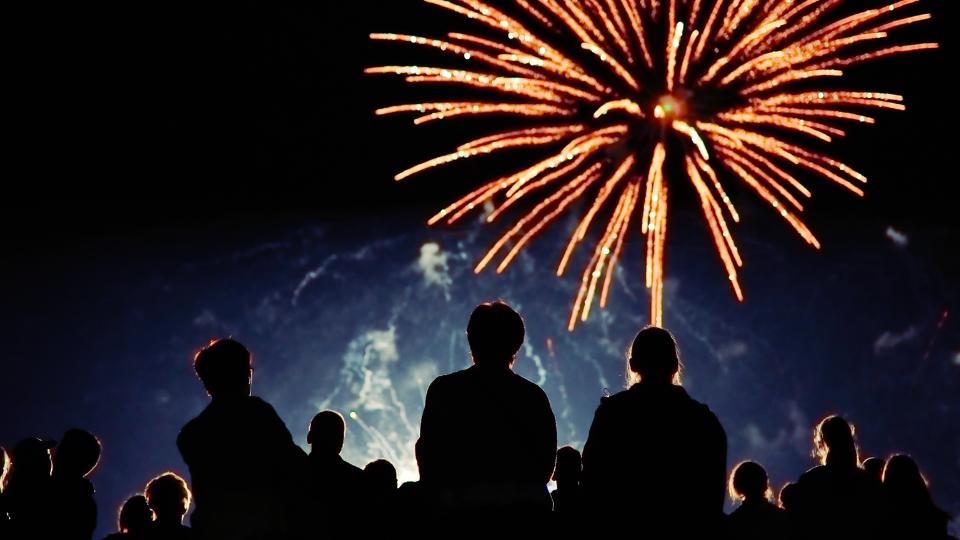
The burning question of how much litter and pollution will be generated by Bonfire Night 2024.
In the 9th century CE, a group of Chinese monks were experimenting with different elements in their quest to find a life-extending elixir, only to discover gunpowder.
What did they do with this new revolutionary breakthrough? Did they attempt to incorporate the substance into machinery or design new weapons?
No, they began stuffing the black powder into bamboo sticks and lighting them on fire for their amusement.
Fast forward a millennium to a holiday based on a man famed for attempting to give the House of Parliament its very own unwanted pyrotechnic show, and it would seem not much has changed.
But does this celebration come at a cost to our health and have an impact on the environment? Is local wildlife being unintentionally damaged in ways that may not be obvious at first?
Table of Contents
- How much pollution does bonfire night generate?
- Are fireworks harmful to the environment?
- What effect does bonfire night pollution have on wildlife?
- Are bonfires a good opportunity to get rid of unwanted rubbish?
- How can I properly dispose of fireworks?
How much pollution does bonfire night generate?
Brexit and the supply chain crisis are threatening to put a dampener on this year’s Bonfire Night 2024 firework displays as distributors warn that import problems have reduced stocks by up to 70% and forced up prices.
Firework prices have risen by over 25% as a result of the disruptions to supply chains from the EU, leading many export companies to impose a mandatory £5,000 charge per shipping container.
However, firework purchases have shown no signs of decreasing and many still look to have their own personal celebrations on their own property or in the street.
Much of these used fireworks are often left as litter which can cause pollutants to remain on the ground which can be ingested by animals.
The exact amount of matter being sent to landfill is difficult to account for, although there have been studies performed to determine the amount of pollution being leaked as a result of bonfire night celebrations.
Bonfire Night Pollution Research
The University of Leeds tasked researchers to measure the amounts of soot in the atmosphere during and after the displays had ended and found that levels were 100 times higher than usual.
Air Quality News also observed findings from the AQIN and noted that the daily average for particulates in the air had risen across all of the major cities throughout the UK.
London had shown the biggest spike, with levels recorded as high as 48µg/m3 and the figure had almost tripled within 48 hours of the first recording.
It’s important to note that these levels of particulate matter are considered harmful – anyone may feel negative health complications as a result.
Bonfires are responsible for the largest annual spike in particulates in the UK, including Sulphur Dioxide (SO2), nitrogen dioxide (NO2) and particulate matter (PM2.5).
It’s advised that anyone with a breathing condition such as asthma remain indoors and avoid over-exertion during this period. Harmful air particulate levels are expected to rise on bonfire night 2022.
Are fireworks harmful to the environment?
If Guy Fawkes had succeeded in lighting the 2,500kg of gunpowder underneath the Houses of Parliament, he would’ve caused damage within a radius of roughly 500 metres.
Come the 5th of November we probably won’t see members of the British public heading to their local government building to place a few powder kegs in the cellar, but that doesn’t mean that widespread damage and pollution isn’t occurring.
Bonfire Night Air Pollution Findings
Test results have demonstrated that Guy Fawkes is one of the most polluted nights of the year.
Bonfire night pollution emissions alone were likely higher than those produced by incineration facilities in 2010.
Among the harmful bonfire night pollution gases are carbon dioxide (CO2), carbon monoxide (CO), sulphur dioxide (SO2), particulate matter (PM) as well as toxic metals, namely lithium (Li) and barium (Ba).
The North-West of England recorded exceptionally high levels of harmful pollutants on Guy Fawkes night on the 5th and 6th of November 2017 according to the Department of Environment, Food and Rural Affairs (DEFRA).
Check the annual report for ‘Air Quality in the UK’.
The release of bonfire night pollution particles on a large scale which can linger will take much longer to dissipate, which results in higher greenhouse emissions and can even be harmful to human health when particles remain at ground level.
Firework-related injuries are also on the up with 3.1 injuries recorded per 100 people in 2016 rising to 3.5 in 2021, that’s an estimated 11,500.
There were visits to A&E ranging from 17,395 and 607 hospital admissions recorded across England for injuries related to fireworks between 2015 and 2019.
What effect does bonfire night pollution have on wildlife?
After the 2020 New Year celebrations in Rome, thousands of dead birds were found on the streets. It was said that they had suffered heart attacks as a result of the firework displays in the Italian capital.
Bonfire night pollution is not only limited to air particles.
During loud displays, many animals will simply flee or abandon their nests or burrows and never return – leaving their young to starve or be picked off by predators.
Studies at the School of Veterinary Medicine, University of California have shown that half of pet, horse and livestock owners have observed a fright response from their animals during firework displays.
One in five dog owners who have had their dog run away reported that loud noises were the cause.

Are bonfires a good opportunity to get rid of unwanted rubbish?
Well yes and no. In short, you can legally place any untreated wood, paper or cardboard onto a bonfire pile.
You may think that burning some types of food waste or furniture would be a good idea, but that’s not the case.
Burning these materials will release harmful pollutants into the air which can lead to health conditions for spectators.
Before placing any items onto a pile, you should first check that these materials are permitted by the council in accordance with bonfire night pollution prevention guidelines.
Bonfires are not a chance to get rid of any unwanted rubbish:
The Environmental Agency has made a set of guidelines to help organisers correctly follow the law and avoid any legal complications in terms of the bonfire site and items being added to it.
This is to prevent any waste from being illegally burned which would cause harm to the respiratory health of bystanders.
Those responsible for bonfires may even be fined up to £50,000 if they don’t follow these guidelines for bonfire night pollution carefully.

In order to maintain sound compliance you should do the following:
- Make note of where items have originated from.
- Keep the site guarded it locked so that others may not add to it without your knowledge.
- Any wood should be dry, clean and untreated.
- Use small amounts of cardboard as kindling only.
- Don’t burn any unsuitable materials such as plastics or synthetics and clothing
“Bonfires are not to be used for a seasonal clear-out of your rubbish.”
Sam Pickard of the Environment Agency
“It is not an excuse to get rid of difficult to dispose of rubbish by burning it yourself or asking others to do it for you.”
Local waste collection sites or waste management service providers should be used instead.
People will often try to add garden waste to a bonfire.
It may seem like a good idea at the time, but igniting garden waste can result in 30 times the amount of particulate pollution on bonfire night being produced than using regular untreated wood, as discovered by a team of French scientists.
The smoke produced by garden waste is comparable to that of wildfires and can be very harmful. We advise using composting methods as a better alternative.
How can I properly dispose of fireworks?
First you need to make sure that the device is properly soaked through.
You can do this by placing the firework or mortar into a bucket of water (for several hours if misfired).
The same goes for duds and unused fireworks. Soak any ordinance for 20 minutes until you’re sure it’s wet through.
After which you should drain any excess water into the toilet. Then you may place the item into a sealed bag which you are sure won’t leak and cause contamination.
Whatever you do, don’t attempt to recycle any material from a firework or mortar, even though they are typically made from paper, the harmful material stored inside will leave traces and pollute a whole batch of waste at the recycling plant during treatment and separation.
For Bonfire Night 2022 make sure you have your sites secure to protect from illegal fly-tipping.
Dispose of any fireworks with care. Only burn materials are permitted by the EA.
If you’ve used a fire extinguisher to douse a fire and need to dispose of it, you can read more on how to do so in our dedicated blog.





